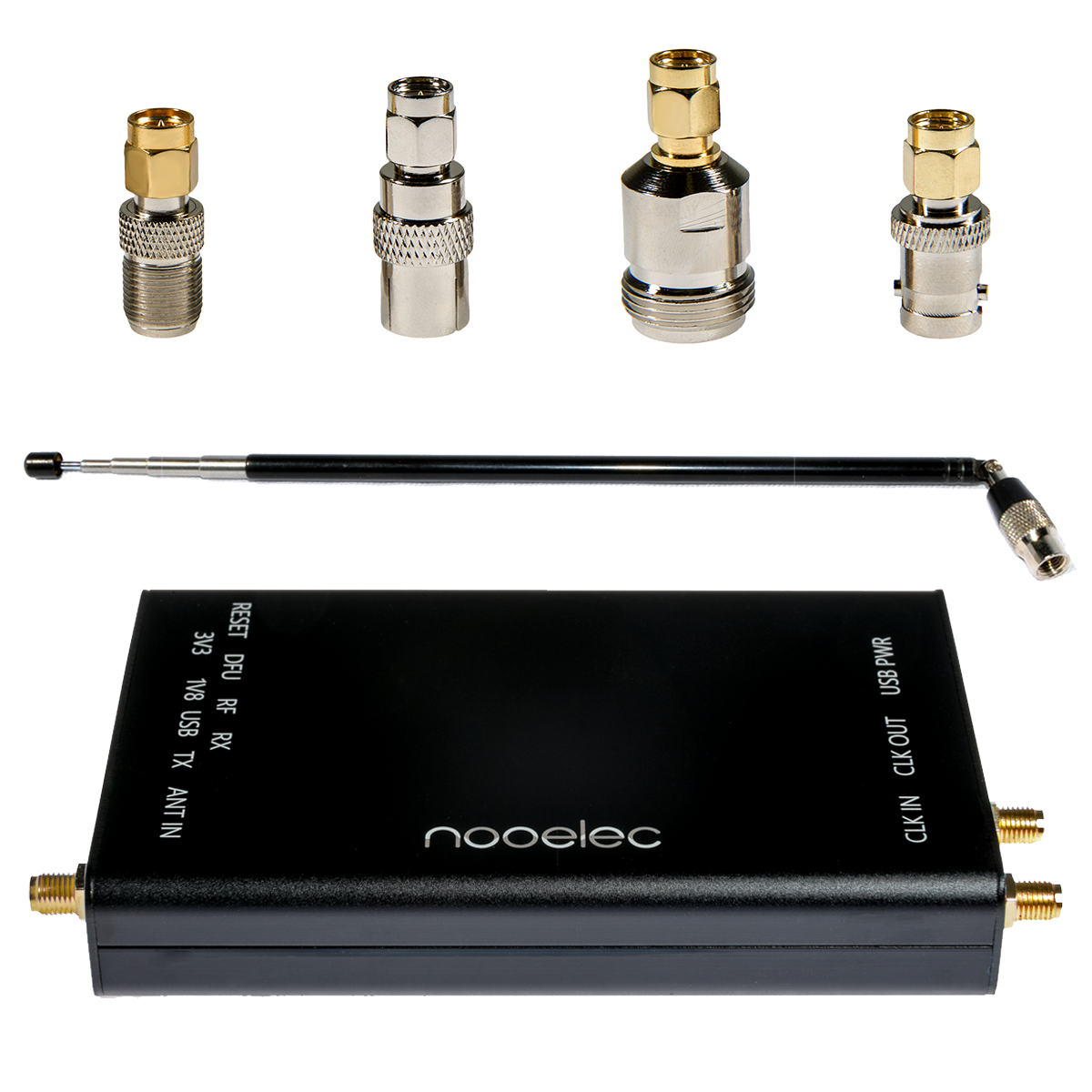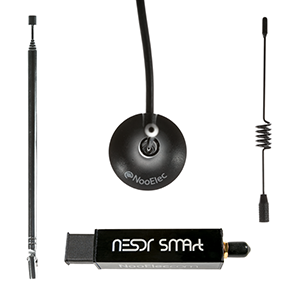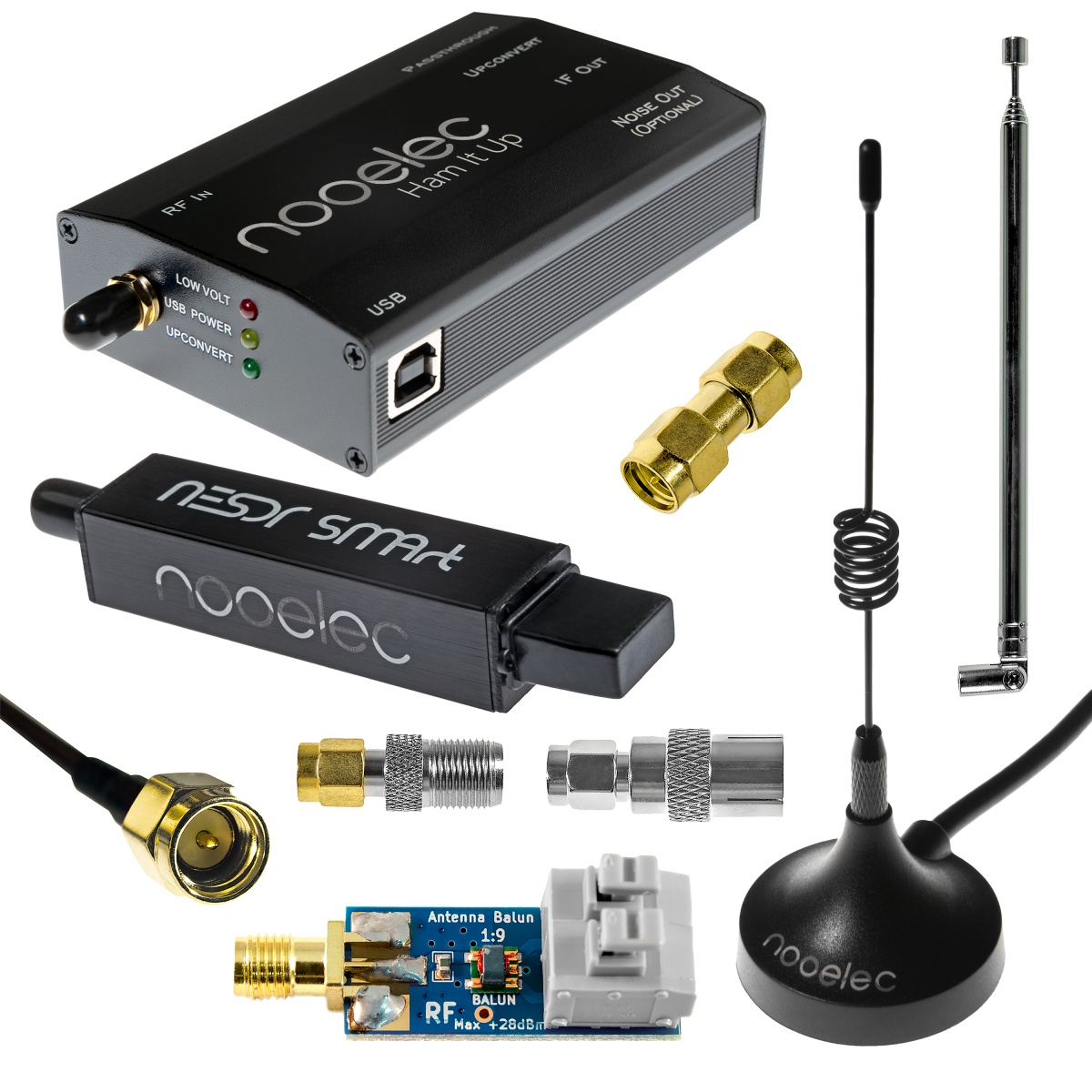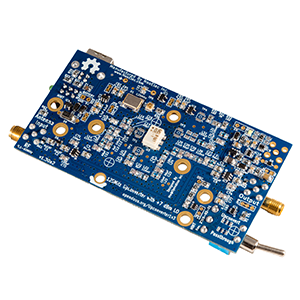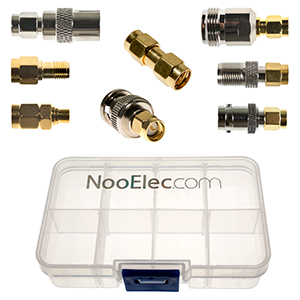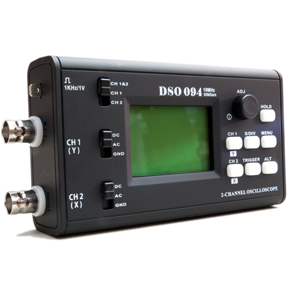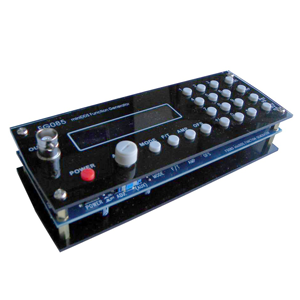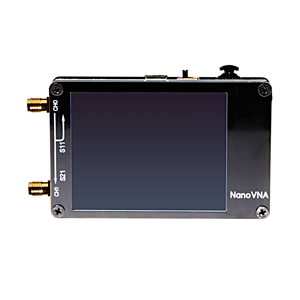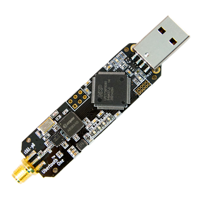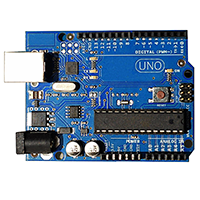Description
Details
DSO138 was designed as a 'training' oscilloscope kit. Simplicity in structure and ease of assembly/operation were the main design goals. To meet this goal, DSO138 uses mostly through-hole parts.
This oscilloscope is partially open-sourced, which means source code is available to allow user to add their own features. At the heart of DSO138 is a Cortex-M3 ARM processor (STM32F103C8) from ST. Of course, the MCU has been pre-programmed, so no re-programming is required. It uses 2.4-inch TFT LCD (320 X 240 dotmatrix, 262K colors) as its display element to ensure clear waveforms.
Detailed assembly instructions, troubleshooting guide and schematic are provided.
DSO138 Features:
- Analog bandwidth: 0 - 200KHz
- Sampling rate: 1Msps max
- Sensitivity: 10mV/Div - 5V/Div
- Sensitivity error: < 5%
- Vertical resolution: 12-bit
- Timebase: 10us/Div - 500s/Div
- Record length: 1024 points
- Built-in 1KHz/3.3V test signal Waveform frozen
- (HOLD) function available
- Save/recall waveform
Additional Info
Additional Info
| SKU | 100664 |
|---|---|
| UPC | No |
Reviews
- DSO-138Review by Tim
-
"I unpacked the kit, tagged the parts with little pieces of tape, and pressed them into a block of Styrofoam, while checking the parts list as I went along. While I was missing a couple of resistors, everything else was provided; replacement of those resistors was no big deal, as I work in an electronics manufacturing company.Performance Value Quality
The instruction sheets, though limited, were more than adequate to properly construct, test, and utilitize this oscilloscope kit. I used a desk lamp with a magnifying lens to construct the scope. While there was some fairly delicate soldering involved, I was able to complete my project at work, during my half-hour lunch breaks, in a week and a half.
When powering up my newly-assembled scope, I was impressed by the color LCD screen, and its remarkably clear display. Of course, I had to first hook its input up to the internal 1KHz test loop. For the $30 I spent for the kit, it seemed almost too good to be true. Even with its limited bandwidth of 200 KHz, it proved useful to test microphones, and to analyze the signals of line-level audio equipment with an appropriate signal source. As a licensed amateur radio operator, I keep it hooked up across the auxiliary audio output of my main "base station" rig; in this configuration, I can see if they are overmodulating on their transmissions, in which case I tell them to back away from their microphones or reduce their mic gain.
The kit itself is actually a most excellent starter for someone who is new to oscilloscopes, or looking for a good DIY project. However, there are a few loose ends. For one thing, the kit is lacking any form of cabinet or enclosure. While I understand that you are trying to keep the cost low, could you not offer an enclosure as an additional option? It need not be very fancy; appropriately placed holes and slots could be provided to access switches with a plastic tuning tool. Secondarily, how do I use that USB port? You ought to consider providing more documentation about that."
(Posted on 2/1/2017)

